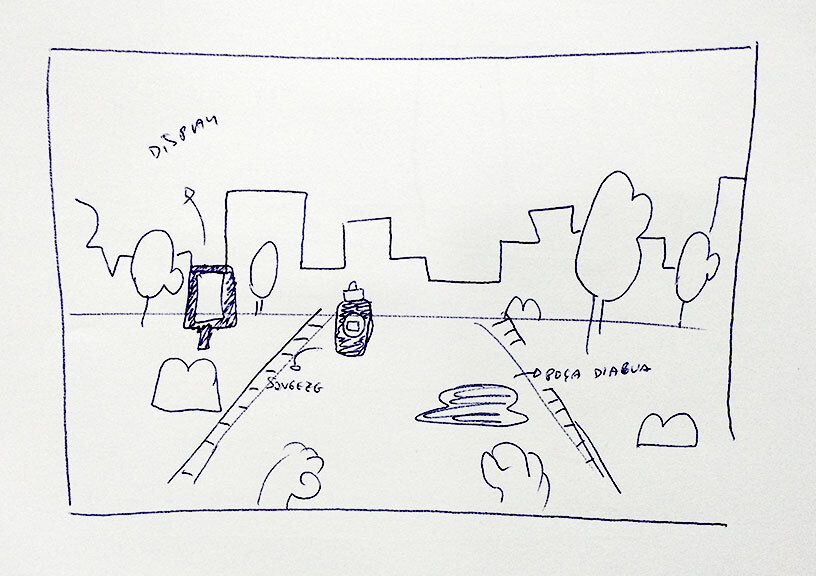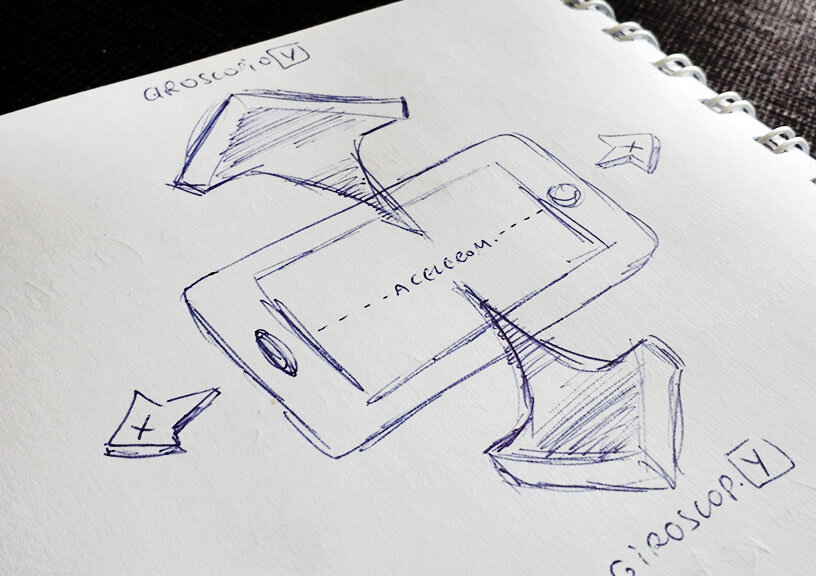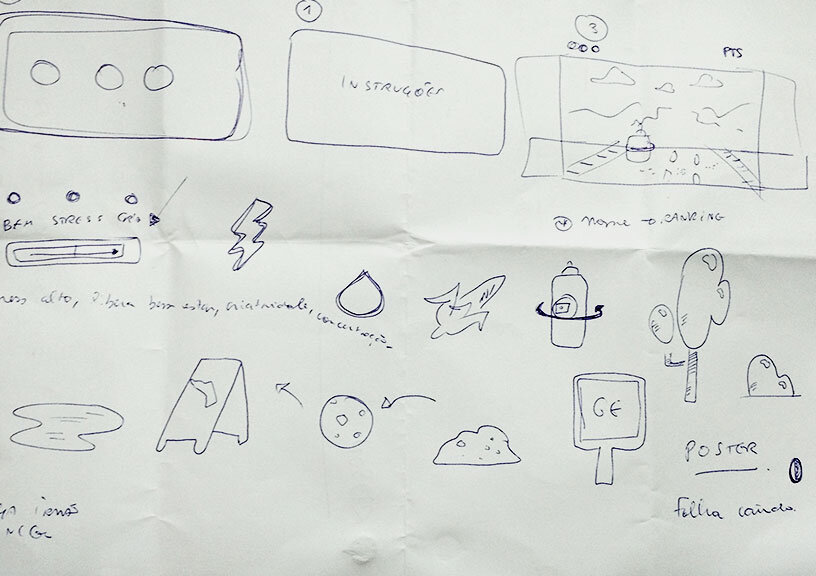
Virtual Reality Game
Company:
Globo Nordeste TV, Brazil.
My Role:
UX/UI Designer, art director, and game designer.
Team:
1 Mobile/Unit Developer, 1 back-end developer, 1 Illustrator, and one 3D Artist.
Situation
Globo TV, the most popular open TV channel in Brazil, would like to promote its annual advertising award in Pernambuco. The goal was to create an innovative campaign capable of engaging the media professionals and the local advertising professionals.
Challenge
How might we build an experience that amazes and engages the target audience?
How might we increase the number of cases submitted to the award?
Proposed Solution
VR game where the user plays a virtual race riding a bike, skating or just running.
Players get points by collecting virtual coins, energy drinks, and special items. They must evade obstacles to avoid losing points.
Custom cardboard with instructions and headband.
Actions
Conducted meetings with the dev team to find a technology that could provide a VR experience for iOS and Android devices.
Defined the concept of the VR game, defining how it would work.
Sketched initial ideas, game rules, and flows.
Partnered with the dev team to make a prototype to ensure the idea was doable.
Created a low-fi prototype of the game.
Pitched the project to the Marketing team of Globo Nordeste TV.
Created a high-fi prototype of the game.
Worked closely with the developers, illustrator, and 3D artist to ensure the game was being developed as planned.
Ran usability tests with 10+ users and refined the game based on their feedback.
Partnered with Facform to create a custom VR viewer.
Results
Record of registrations with a 116% increase in case submissions for the Award.
The audience engaged with the game. It was possible to verify that each user played an average of 10 times each.
The game was awarded with two Silvers at the regional stage of Ampro Globe Awards in the “Best Use of Digital Marketing” and “Best Promotional Action” categories.
Design Process
Research
During this phase, I spoke to a psychologist and found studies indicating that exercises stimulate neurons and cognitive functions, improving attention, learning, memory, and making decisions. It also reduces anxiety, depression, and stress. Then I thought of pushing people to exercise anywhere by participating in a Virtual Reality race.
Ideation
I led every step of the design process, creating the game's concept, sketching initial ideas, refining into low-fidelity designs, and turning them into high-definition mockups.
Conducted meetings with the development team to find a technology that could provide a VR experience for iOS and Android devices. Partnered with the dev team to make a prototype to ensure the idea was doable.

The first draft of the game concept.

Draft of how the accelerometer would move the avatar in the VR game.

Draft of game obstacles.
Flows
User Flow VR Game
Technical Challenges
During the ideation phase, questions regarding technology and user experience started rising.
Which technology would better provide a VR experience for iOS and Android devices?
VR viewer was not popular at that time, and the Google Cardboard (recently launched at that time) was not user-friendly.
How to build a user-friendly experience that could be easy even for non-tech users?
How might we provide a smooth and plug-and-play experience for the user?
What happens if the user doesn't have a VR viewer?
Low-fidelity Prototype
User experience with VR glasses.
User experience without VR glasses.
Hight-fidelity Prototype
Navigation based on head movement.
During the game, users must tilt their bodies to change lanes to dodge obstacles and collect special items.
Usability Testing
Running usability tests was a challenge. The project was kept secret until a few weeks before its launch, even in the agency. We tested the game with 10+ users with different profiles, ages, and backgrounds during the development.
Learnings:
Missing instructions on avoiding accidents and setting up the phone into the VR Viewer.
The game speed was too fast.
It was necessary to improve the balance of difficulty x energy x time.
Users were not comfortable holding the VR Viewer when playing the game.
Enhancements:
Added instructions on how to set up the phone and how to avoid accidents in the game.
Added game modes with different speeds by giving the user the option to run, ride a skate, or bike.
Balanced the game difficulty and race length to make the game more competitive.
Added headband to allow users to play without holding the VR Viewer.
Custom Cardboard
I and Facform developed a custom VR viewer inspired by Google Cardboard. Our cardboard version was ready to use, so the user doesn’t have to assemble it as Google's version.
Google Cardboard.
Custom cardboard prototype during the test phase.
Custom cardboard inspired by Google Cardboard. Ready to use, no need to be assembled.
Confort that improves the experience:
We have added a headband to our custom cardboard, allowing the user to play hands-free, having a deeper and more immersive experience.
Real audience playing (running) on the VR game.
Customer exploring the virtual world.
Custom cardboard with instructions on how to play and download the game.
Show case (PT)
Learnings and Insights
Creating non-conventional navigation based on head movement was great learning.
Innovation brings risks. Facing new technologies means you will have to overcome unknowing challenges, and it's exciting!
Testing the application with people with different profiles was crucial to refine and simplify the game experience (speed, difficulty, etc.)

























